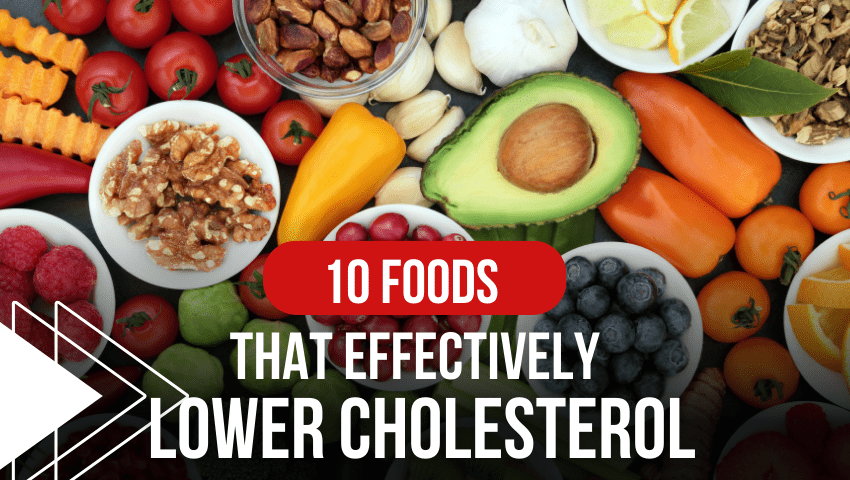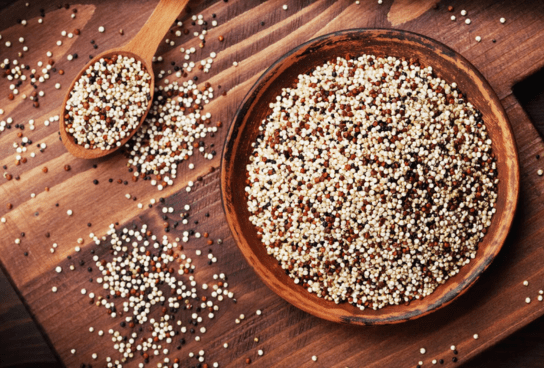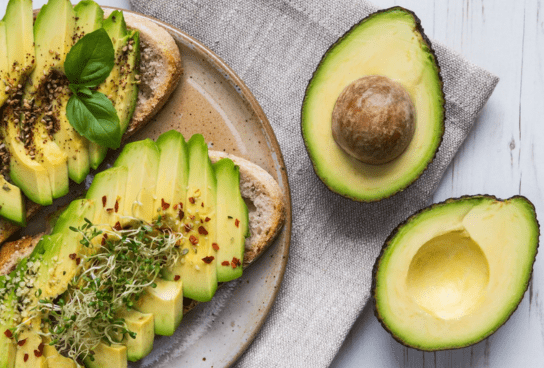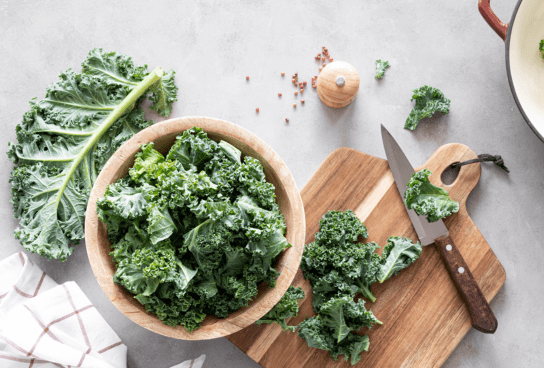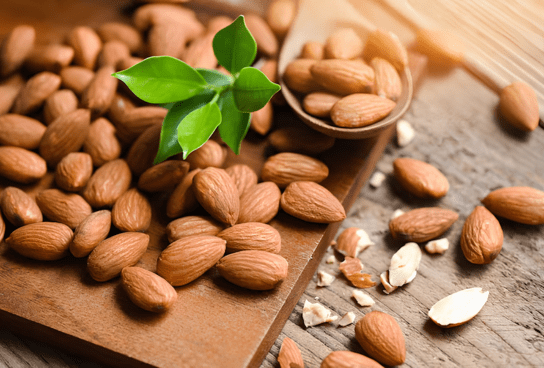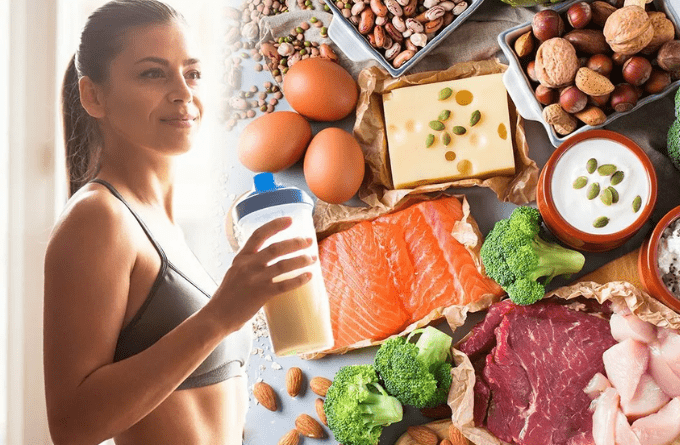
Table of Contents
ToggleDiscover Foods That Lower Cholesterol: Learn how a balanced diet rich in antioxidants, fiber, and healthy fats can combat high cholesterol and reduce cardiovascular risks.
Cholesterol and Its Impact on Health
High cholesterol levels sustained over a long period of time are very dangerous to health. It increases the risk of developing cardiovascular diseases such as atherosclerosis, ischemic heart disease (coronary heart disease), stroke or myocardial infarction.
Cholesterol in the right concentration, however, is extremely important for the proper functioning of the body – it participates in many metabolic processes, is a building block of neuronal sheaths and thus supports the transmission of nerve impulses, and also plays an important role in the synthesis of non-steroidal hormones and vitamin D3. It is important to be able to distinguish between bad cholesterol of the LDL fraction and good cholesterol of the HDL fraction.
Discover the Top 10 Cholesterol-Lowering Foods:
What is good cholesterol and bad cholesterol?
Many people have certainly encountered such terms as good and bad cholesterol. What do they mean in practice? Bad cholesterol, or LDL fraction cholesterol, derives from low-density lipoproteins, whose function is to transport cholesterol from the liver to the cells.
As long as the level of bad cholesterol is within normal limits, it performs its function perfectly, without causing any harmful changes in the body. Unfortunately, when the acceptable norm is exceeded, the LDL fraction cholesterol begins to deposit in the walls of blood vessels, narrowing their lumen and contributing to the development of cardiovascular disease.
Good cholesterol, or HDL fraction cholesterol, is the complete opposite of bad cholesterol. It is derived from high-density lipoproteins and benefits the health of the circulatory system by promoting the transport of cholesterol from the arteries and tissues to the liver. Thus, it prevents the accumulation of lipids in the blood vessels and lowers the risk of dangerous diseases. It is therefore important to strive to lower the level of LDL fraction cholesterol and raise the level of HDL fraction cholesterol at the same time.
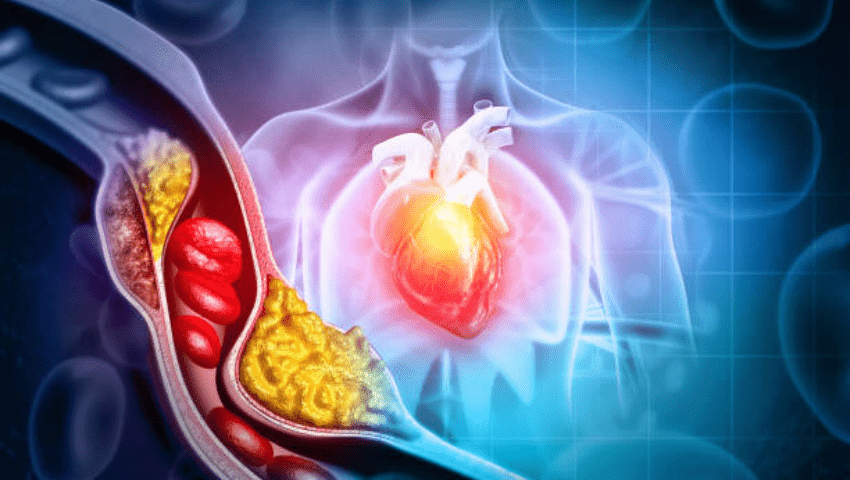
Good and bad cholesterol standards
To check whether the cholesterol level in our body is within the norm, a so-called lipid profile or lipid panel is performed, which is a test of the concentration of fatty substances. Lipid profile measures not only the level of bad and good cholesterol, but also the concentration of triglycerides, which have important functions in our body, but in excess contribute to the development of cardiovascular diseases. The optimal results based on the American Medical Association Cholesterol Guidelines are:
– Total cholesterol: less than 200 mg/dl,
– LDL fraction cholesterol: less than 100 mg/dl,
– HDL fraction cholesterol: greater than 60 mg/dl,
– Triglycerides: less than 150 mg/dl.
Note that the recommendations for bad (LDL) cholesterol are lower if we suffer from cardiovascular disease, kidney disease or diabetes. If our results exceed the cholesterol norms, then we are dealing with hypercholesterolemia, which is not a disease, but a metabolic abnormality that increases the risk of developing cardiovascular diseases. In this case, cholesterol tests should be performed once a year.
How to lower cholesterol levels?
Useful Information
Did you know that incorporating foods that lower cholesterol into your diet doesn't mean sacrificing taste? In fact, many of these cholesterol-friendly options are not only good for your heart but also delicious. For example, indulging in a handful of crunchy almonds or walnuts not only provides a satisfying snack but also delivers a dose of heart-healthy fats and fiber. So, you can treat your taste buds while nourishing your cardiovascular health.

In the fight against hypercholesterolemia, it is important to change both eating habits and lifestyle. A proper diet combined with physical activity usually brings very good results. Therefore, it is worthwhile to devote at least 30 minutes a day, several times a week, to sports (running, cycling, swimming, Nordic walking, etc.), as well as to give up compulsive smoking.
In terms of diet, the most important thing is to minimize the intake of saturated fatty acids and trans isomers, which are present in highly processed foods – their supply should be a maximum of 5-6% of the daily caloric balance. Highly processed foods are also worth eliminating from the diet because they contain a fair amount of simple carbohydrates, preservatives, bulk foods and other harmful substances. Instead, it’s worth adding to your diet healthy vegetable oils, nuts, seeds and sea fish, which contain precious unsaturated fatty acids.
Want a savory option to lower cholesterol?
Look no further than the mighty avocado. With its rich, creamy texture, avocados are a source of monounsaturated fats that can help raise your good cholesterol while lowering the bad. Mash them up for a delectable guacamole or slice them onto whole-grain toast for a heart-healthy and satisfying snack.
A diet to lower cholesterol should be based mainly on vegetables, fruits and fiber (whole-grain bread, cereals, bran). When arranging a new menu, it is best to focus on the following 10 foods that lower cholesterol and can be easily found in any American supermarket.
Lowering Cholesterol Through Lifestyle Changes
Combatting hypercholesterolemia necessitates lifestyle and dietary shifts. Regular physical activity, such as running, cycling, or swimming, coupled with abstaining from smoking, yields positive outcomes. Diet-wise, minimizing saturated fats and trans isomers found in processed foods, while incorporating healthy vegetable oils, nuts, seeds, and fatty marine fish rich in unsaturated fatty acids, is crucial. A diet centered around vegetables, fruits, and fiber is key.
Exploring the Power of Foods That Lower Cholesterol
When it comes to maintaining a healthy heart, the role of diet cannot be overstated. Incorporating Foods That Lower Cholesterol into your daily meals can significantly contribute to cardiovascular well-being.
These foods, rich in heart-healthy nutrients such as soluble fiber, omega-3 fatty acids, and antioxidants, play a crucial role in reducing the levels of bad cholesterol in the body. From vibrant berries packed with heart-loving compounds to the nourishing goodness of nuts and whole grains, these dietary choices can help balance cholesterol levels, support blood vessel function, and ultimately promote a stronger, more resilient heart.
By making these mindful selections a part of your regular eating habits, you empower yourself to proactively manage your cholesterol and embark on a journey toward better heart health.
10 FOODS THAT LOWER CHOLESTEROL:
Nurturing Heart Health: Embracing Cholesterol-Lowering Foods and Lifestyle.
In conclusion, understanding the intricate role of cholesterol in our health is paramount to making informed decisions about our well-being. While cholesterol is essential for various bodily functions, its excessive accumulation, especially the harmful LDL fraction, can significantly increase the risk of cardiovascular diseases. Striking a balance between good and bad cholesterol levels is crucial, and this balance can be positively influenced by adopting a healthier lifestyle and incorporating specific foods that lower cholesterol.
The significance of a heart-healthy lifestyle cannot be overstated. Engaging in regular physical activity, such as brisk walks, cycling, or swimming, not only aids in weight management but also contributes to the overall improvement of cholesterol profiles. Moreover, abstaining from smoking is imperative, as it directly correlates with a decline in HDL fraction cholesterol levels. These lifestyle changes serve as the fundation for maintaining optimal cholesterol levels and promoting cardiovascular well-being.
Here's an interesting twist.
Did you know that dark chocolate, in moderation, could be part of your cholesterol-lowering plan? Dark chocolate contains antioxidants called flavonoids that have been linked to improving heart health. Opt for dark chocolate with a high cocoa content and savor a piece or two as an occasional treat. Indulging in this guilt-free delight might just be a delightful way to support your heart along with other foods that lower cholesterol.
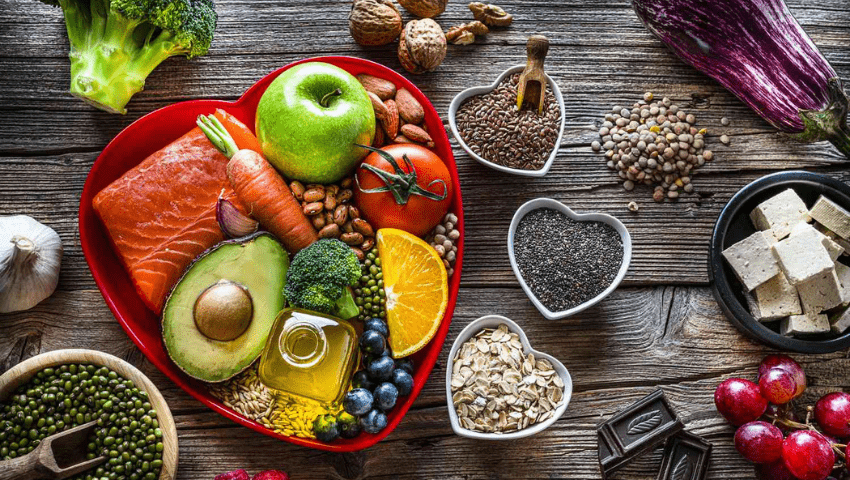
Central to this approach is a well-rounded and nutritious diet that emphasizes the consumption of foods that lower cholesterol. The list of such foods includes a colorful array of fruits and vegetables, with berries, apples, and grapes taking the lead due to their antioxidant-rich content. Incorporating these fruits into daily meals, along with fiber-rich choices like whole-grain bread, oats, and legumes, can effectively contribute to lowering cholesterol levels.
Healthy fats, such as those found in olive oil, canola oil, and fatty marine fish like salmon and mackerel, play a pivotal role in balancing good and bad cholesterol. These fats, along with the cholesterol-reducing properties of nuts, particularly almonds and walnuts, offer a delicious and impactful way to enhance heart health.
While diet and lifestyle adjustments can make a significant difference, it’s important to acknowledge the cumulative effects of these changes over time. Regular monitoring of cholesterol levels through lipid profiles, as recommended by medical guidelines, enables individuals to track their progress and make necessary adaptations.
In essence, the journey towards better cholesterol management and cardiovascular health is multifaceted. By embracing a holistic approach that combines physical activity, avoidance of harmful habits, and a diet rich in foods that lower cholesterol, individuals empower themselves to take control of their well-being. With the potential to mitigate risks and enhance overall quality of life, these efforts serve as a testament to the power of informed choices and their profound impact on our heart health.
Useful Information
Looking to add a burst of flavor to your dishes while reducing cholesterol? Consider the vibrant and juicy goodness of berries. Blueberries, strawberries, and raspberries are not only rich in antioxidants but also contain compounds that have been shown to help lower bad cholesterol levels. So, sprinkle these little natural wonders onto your morning oatmeal or blend them into a refreshing smoothie to give your heart a tasty boost.
Frequently Asked Questions (Foods That Lower Cholesterol):
- What are the potential risks of having sustained high cholesterol levels?
High cholesterol levels over time increase the risk of cardiovascular diseases like atherosclerosis, stroke, and heart disease. - What is the importance of cholesterol in the body?
Cholesterol plays a crucial role in metabolic processes, nerve impulse transmission, hormone synthesis, and vitamin D3 production. - How does bad cholesterol (LDL) impact our health?
Excessive LDL cholesterol can deposit in blood vessel walls, narrowing them and contributing to cardiovascular disease. - What is the role of good cholesterol (HDL) in our bodies?
HDL cholesterol transports cholesterol away from arteries and tissues to the liver, reducing the risk of dangerous diseases. - What are the optimal cholesterol levels according to American Medical Association guidelines?
- Total cholesterol: less than 200 mg/dl,
- LDL cholesterol: less than 100 mg/dl,
- HDL cholesterol: greater than 60 mg/dl,
- Triglycerides: less than 150 mg/dl.
Useful Information
When it comes to cholesterol-lowering foods, don't forget the power of whole grains. Swap out refined grains for whole-grain alternatives like whole wheat, barley, and oats. These grains are packed with soluble fiber, which acts like a sponge to soak up cholesterol and carry it out of your body. By making this simple switch in your diet, you can make a big impact on your cholesterol levels.
- What is hypercholesterolemia and how does it affect health? Hypercholesterolemia is a metabolic abnormality increasing the risk of cardiovascular diseases due to high cholesterol levels.
- How can physical activity contribute to lower cholesterol levels?
Regular exercise like running, cycling, and swimming, combined with quitting smoking, can positively impact cholesterol profiles. - Which foods are recommended for lowering cholesterol?
Fruits, vegetables (especially berries), olive oil, canola oil, fatty marine fish, fiber-rich foods, nuts, whole grains, and teas. - How do antioxidants in fruits and vegetables help lower cholesterol? Antioxidants in fruits like grapes and berries, along with apples and strawberries containing pectin, contribute to cholesterol reduction.
- What role do healthy fats play in cholesterol management? Monounsaturated fats in olive oil and canola oil, as well as omega-3 fatty acids in fatty marine fish and nuts, help balance cholesterol levels.
